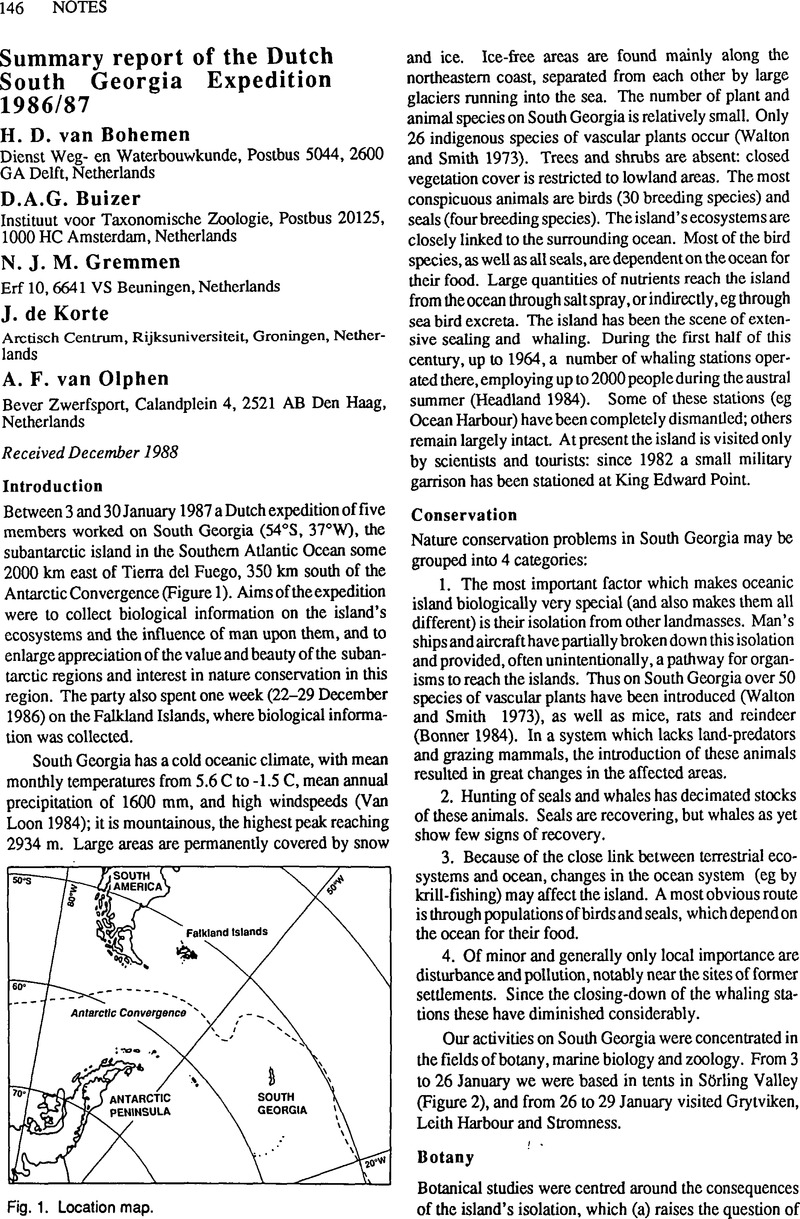No CrossRef data available.
Article contents
Summary report of the Dutch South Georgia Expedition 1986/87
Published online by Cambridge University Press: 27 October 2009
Abstract
An abstract is not available for this content so a preview has been provided. Please use the Get access link above for information on how to access this content.

- Type
- Notes
- Information
- Copyright
- Copyright © Cambridge University Press 1989
References
Bonner, W. N. 1984. Introduced mammals. In: Laws, R. M. (editor). Antarctic Ecology Vol 1. London, Academic Press: 237–78.Google Scholar
Headland, R. K. 1984. The island of South Georgia. Cambridge, Cambridge University Press.Google Scholar
Smith, R. I. L. and Tallowin, J. R. B. 1979. The distribution and size of King Penguin rookeries on South Georgia. British Antarctic Survey Bulletin 49: 259–76.Google Scholar
Stonehouse, B. 1956. The king penguin Aptenodytes patagonica of South Georgia. Falkland Islands Dependencies Survey Scientific Reports 14.Google Scholar
Thomas, G., Croxall, J. P. and Prince, P. A. 1983. Breeding biology of the light-mantled sooty albatross (Phoebetria palpebrata) at South Georgia. Journal of Zoology 199:123–135.CrossRefGoogle Scholar
Van Loon, H. (editor). 1984. Climates of the oceans. World Survey of climatology 15. Amsterdam, Elsevier.Google Scholar
Van Zanten, T. 1976. Preliminary report on germination experiments designed to estimate the survival chances of moss spores during aerial trans-oceanic long range dispersal in the southern hemisphere, with particular reference to New Zealand. Journal of the Hattori Botanical Laboratory 41:133–10.Google Scholar
Walton, D. W. H. and Smith, R. I. L. 1973. Status of the alien vascular flora of South Georgia. British Antarctic Survey Bulletin 36: 79–97.Google Scholar
Westhoff, V. and Van der Maarel, E. 1978. The Braun-Blanquet approach. In: Whittaker, R. H. (editor). Classification of plant communities. The Hague, Junk: 287–399.CrossRefGoogle Scholar


